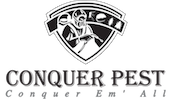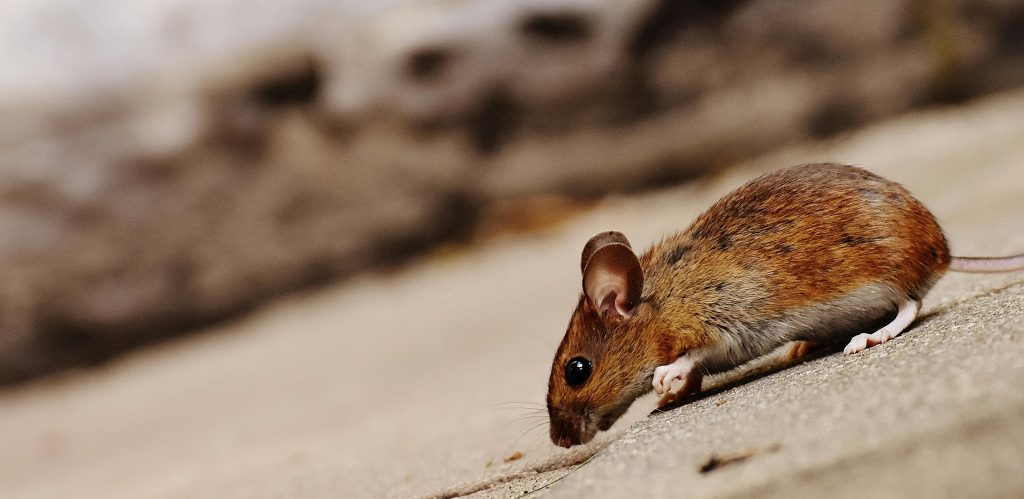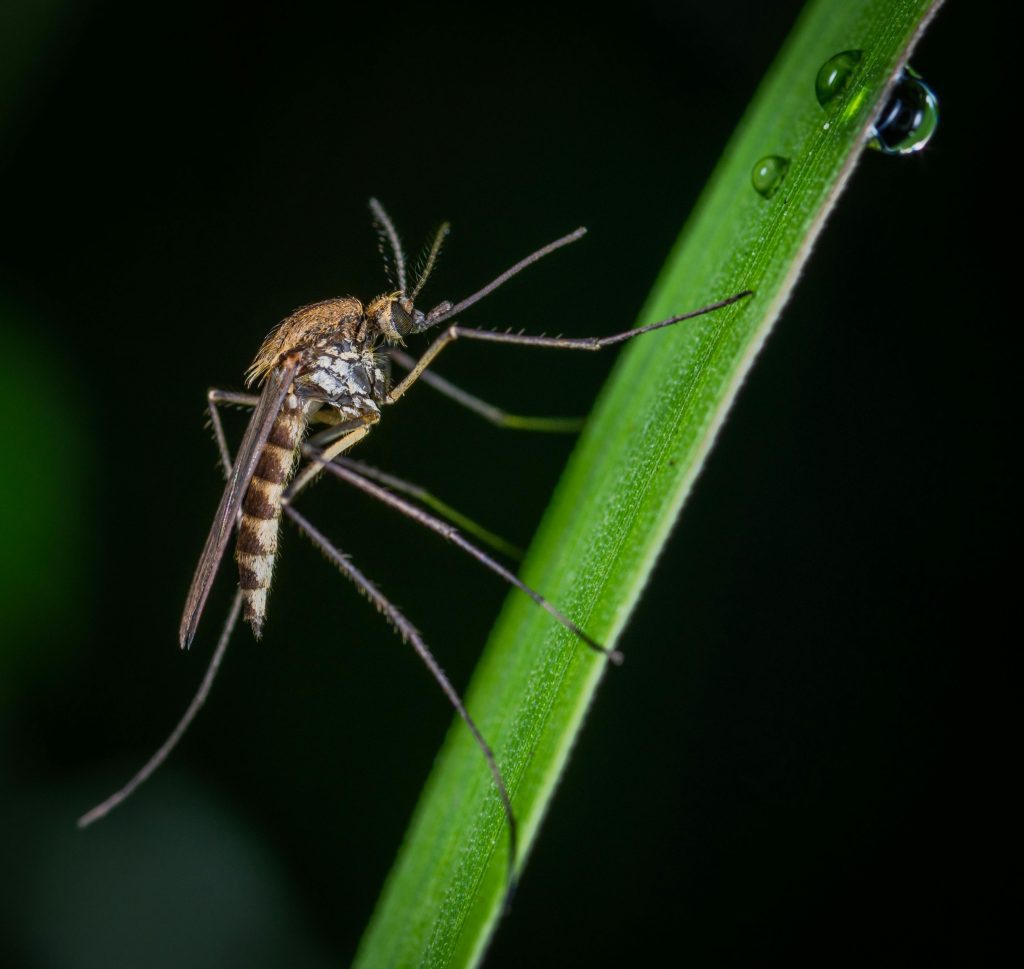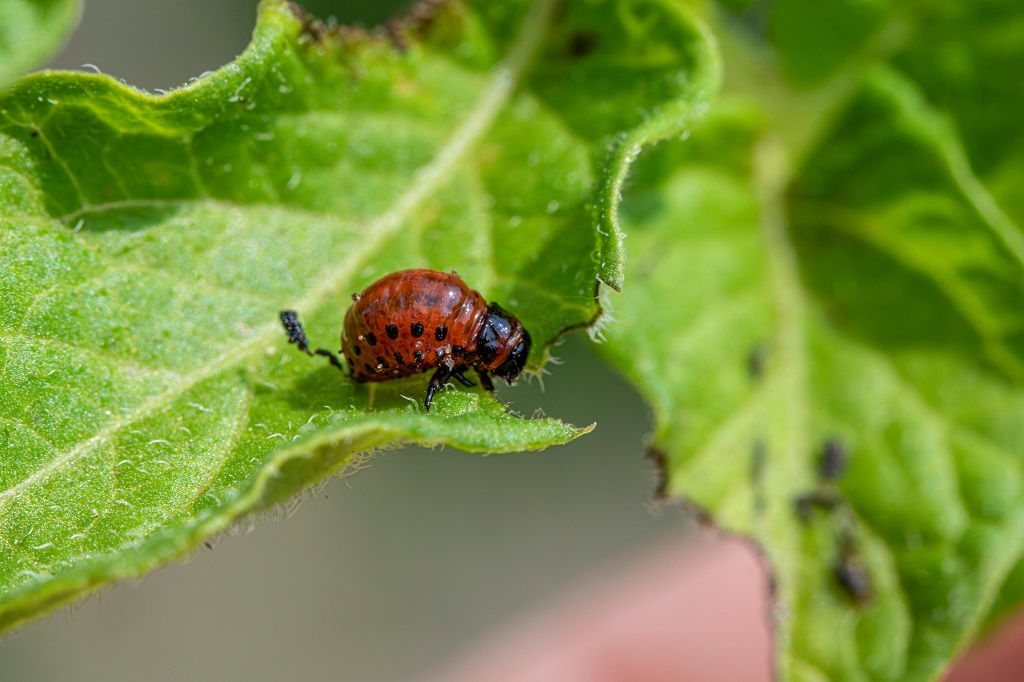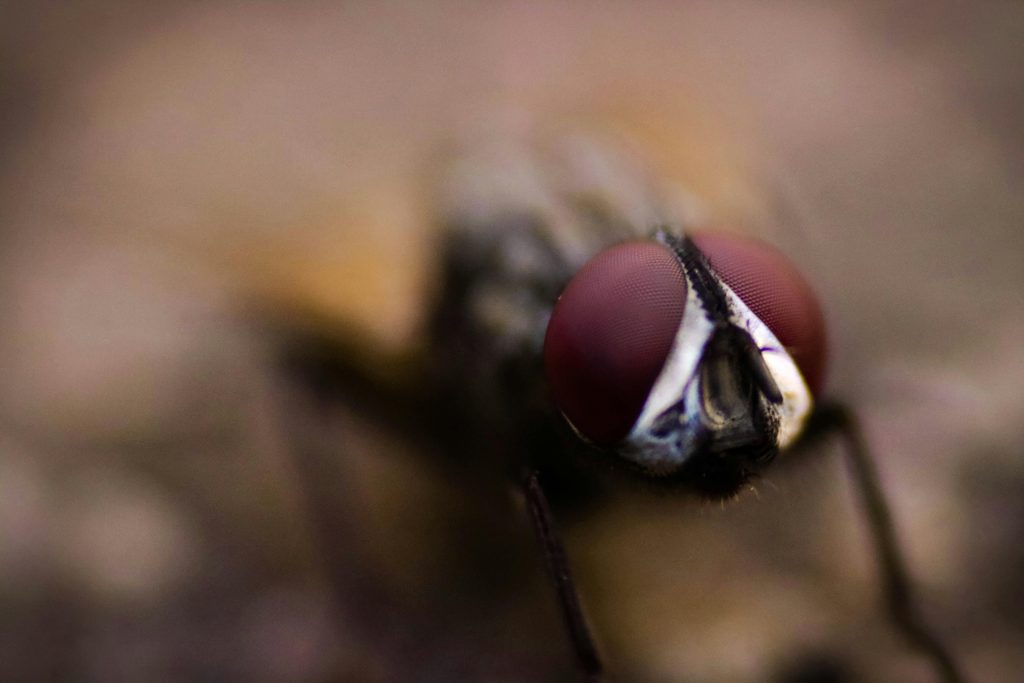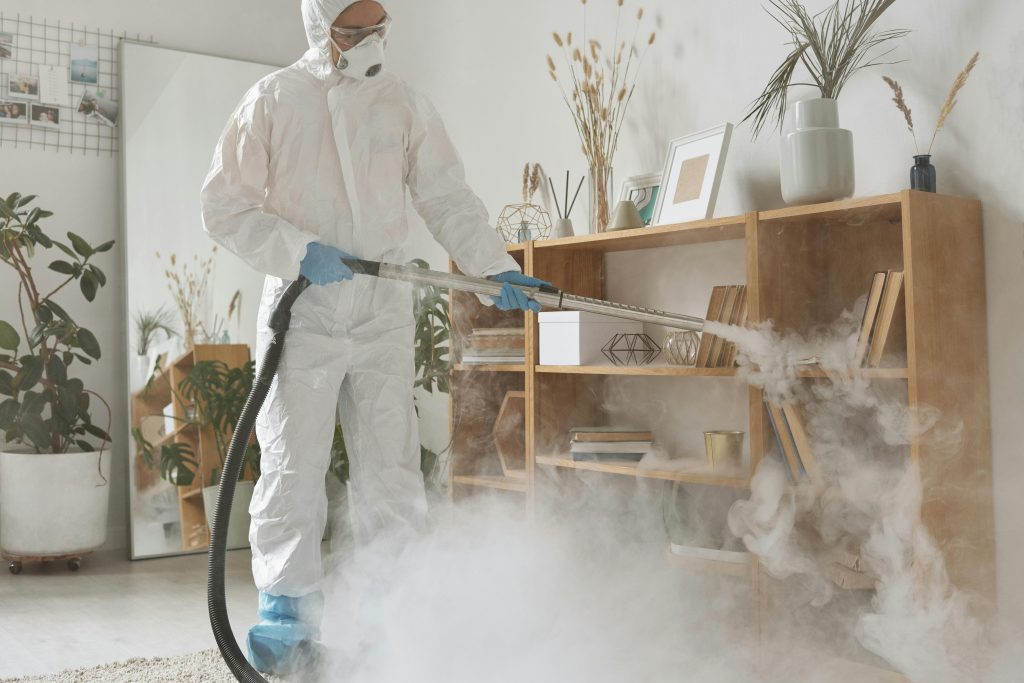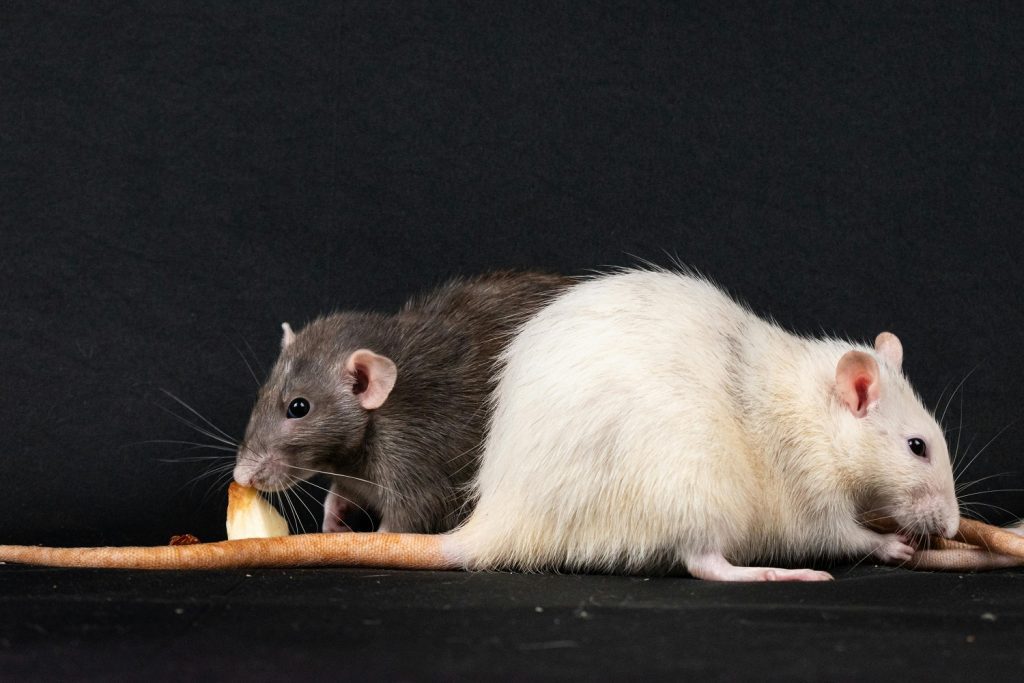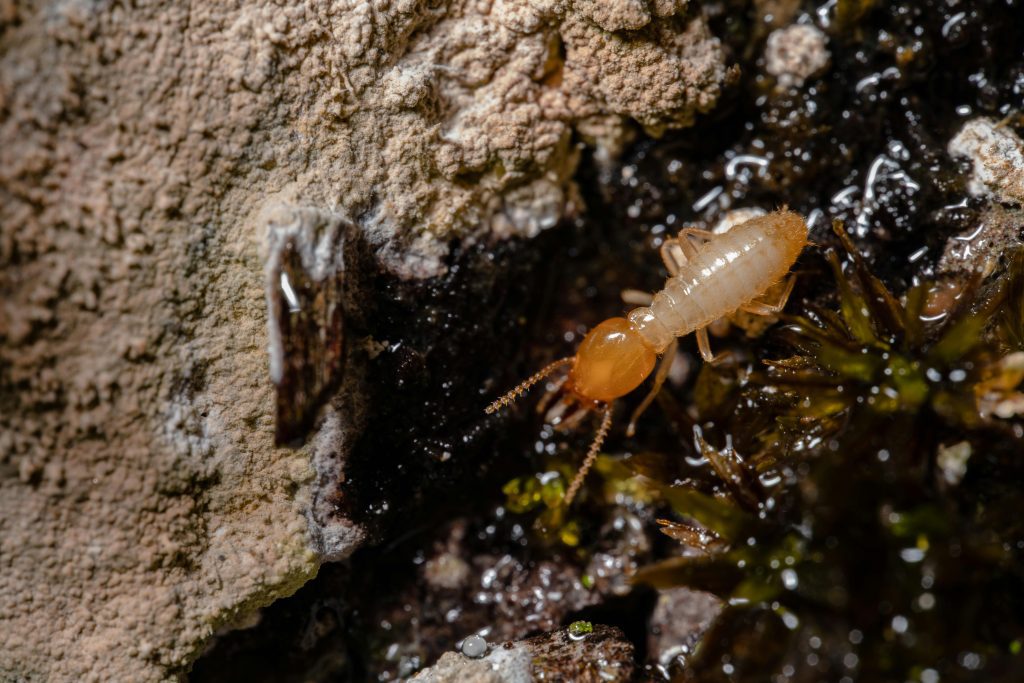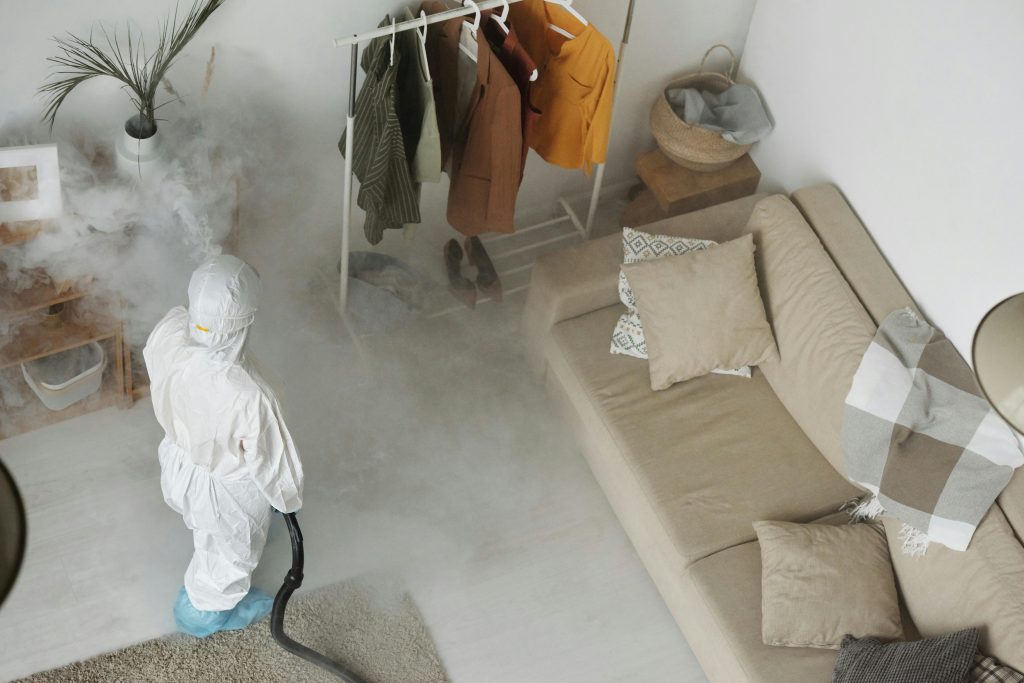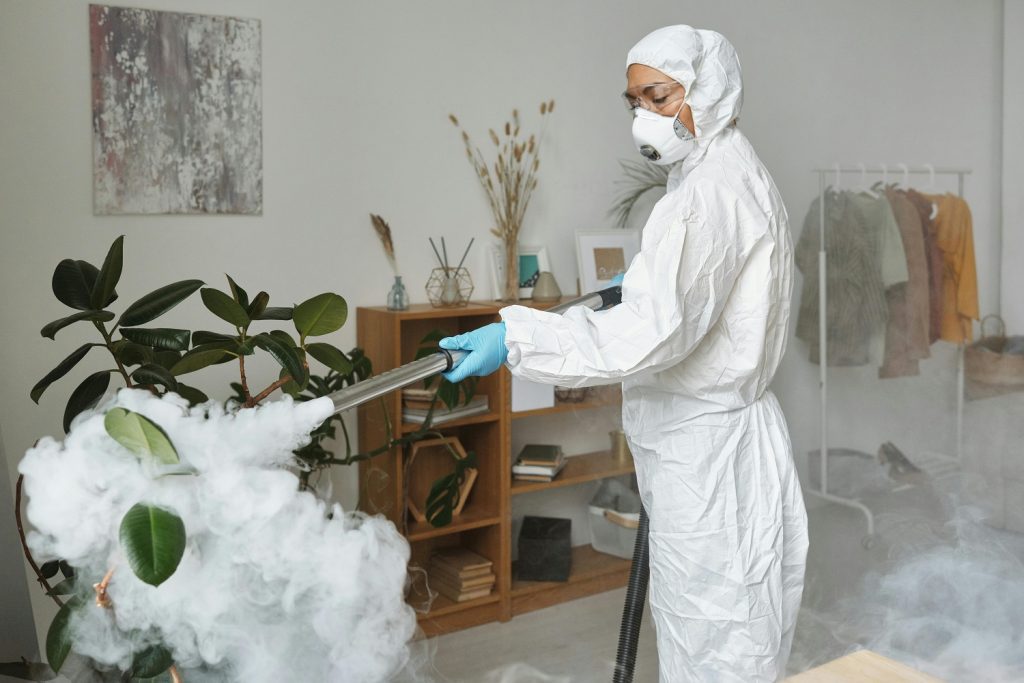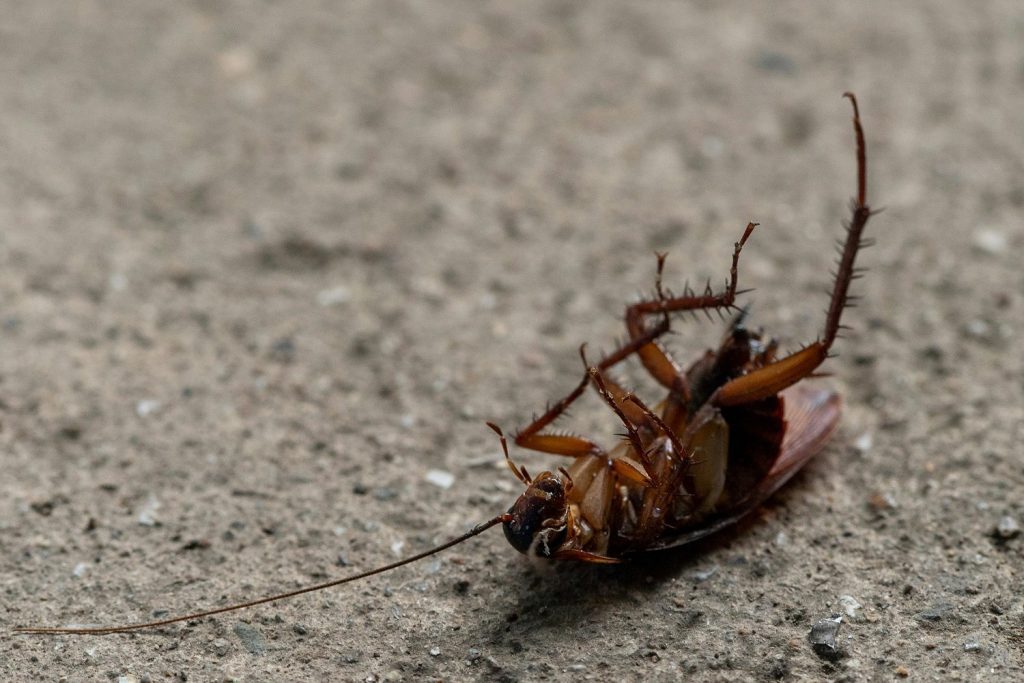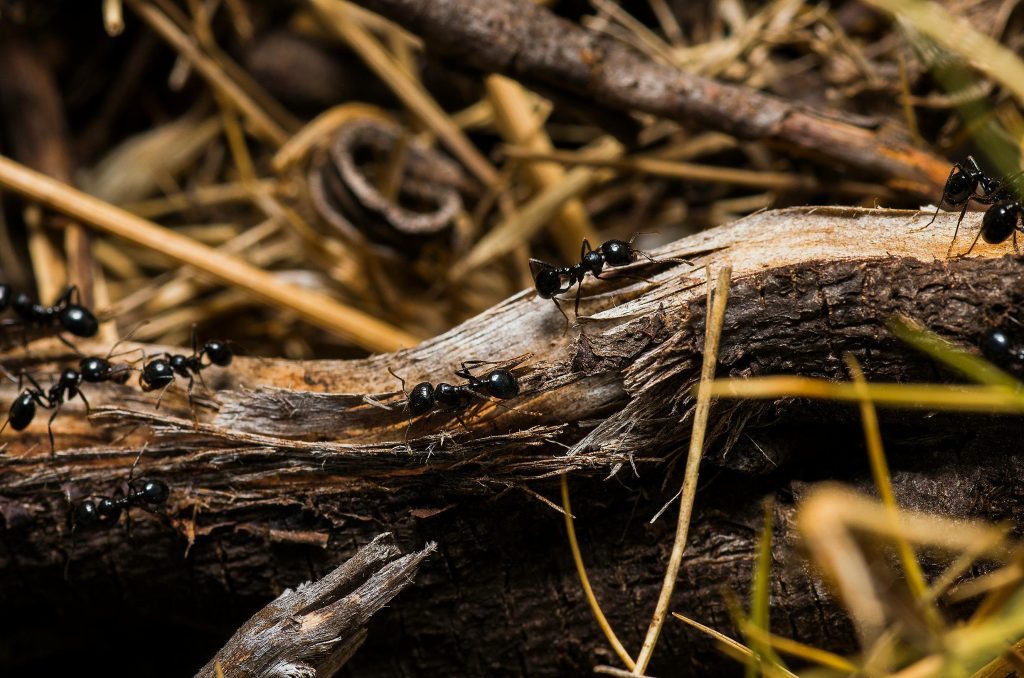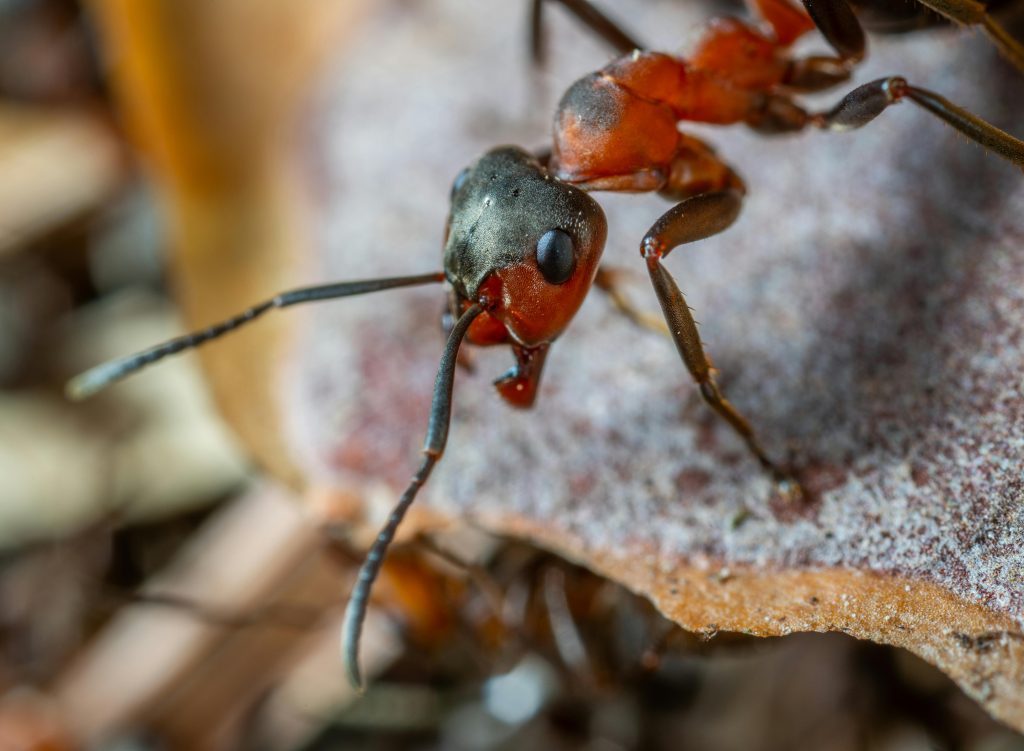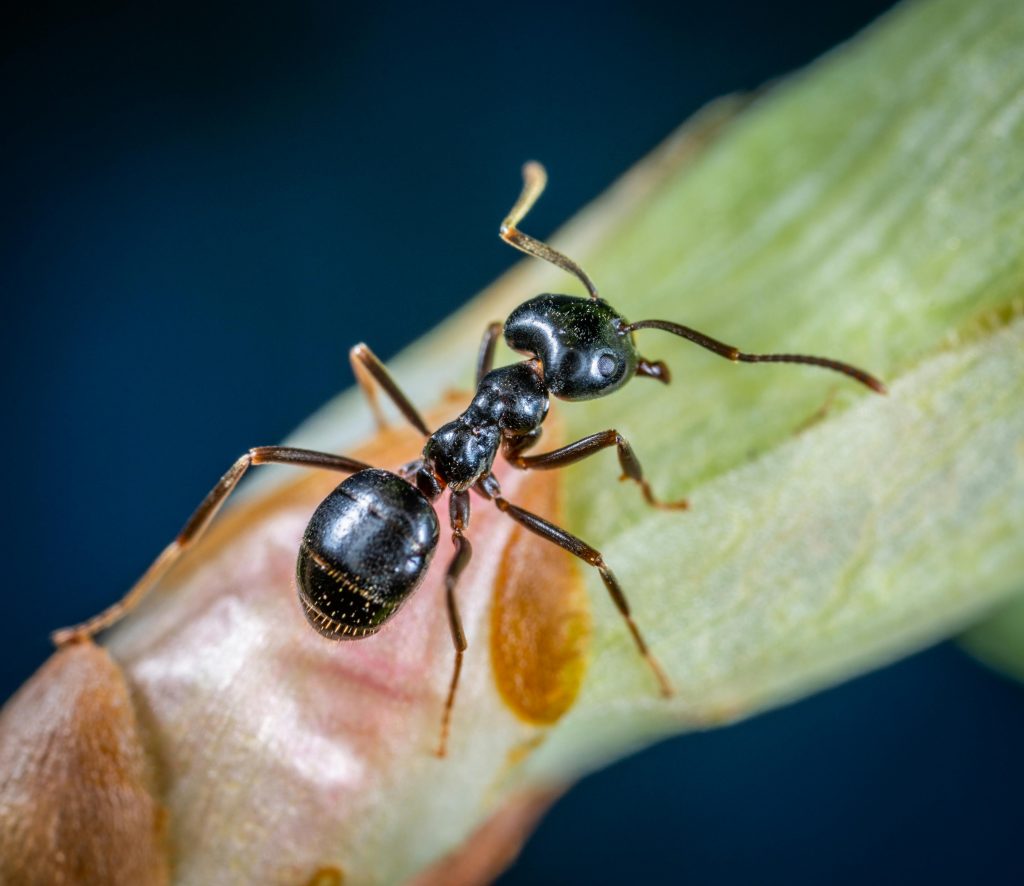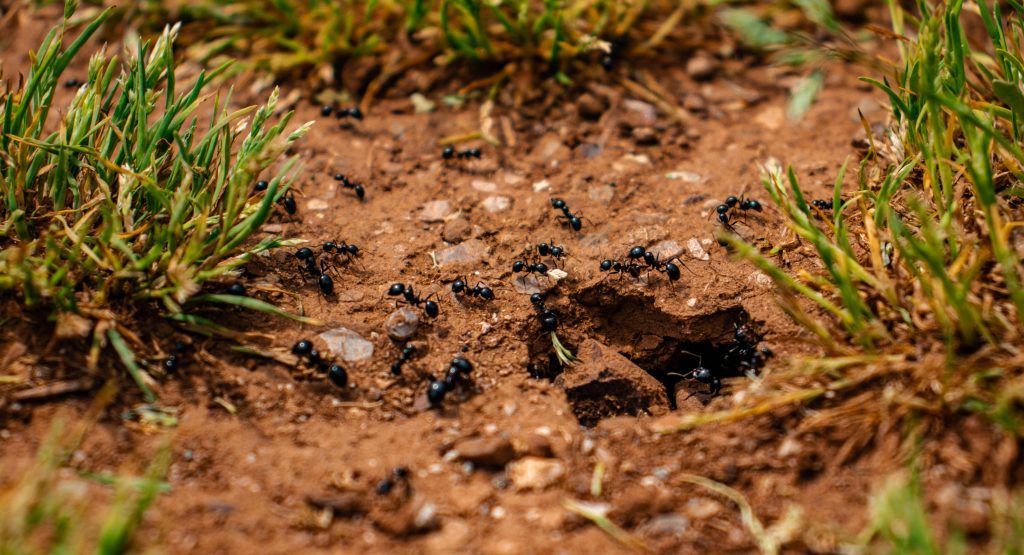How to Pest-Proof Your Singapore Condo or HDB Flat: A Practical Guide

Singapore’s high-density living makes pest control an essential concern for both condo and HDB flat residents. Whether you’re dealing with ants marching across your kitchen or cockroaches sneaking into your bathroom, pests can be more than just a nuisance—they pose health risks and can damage your home.
At Conquer Pest, we believe every home is an essential part of our Singaporean community. By maintaining a pest-free environment, we strengthen the health and harmony of the entire neighbourhood. This practical guide will help you understand the best pest-proofing strategies for your condo or HDB flat—plus when to call in the professionals.
Why Pest Control Is Crucial in Singapore Condos and HDB Flats
Singapore’s tropical climate, combined with densely populated housing, creates ideal conditions for pests like cockroaches, ants, termites, rodents, and mosquitoes to thrive.
Here’s why pest control in condos and HDB flats is so important:
- Health risks: Pests carry diseases like dengue fever, salmonella, and asthma-triggering allergens.
- Property damage: Termites and rodents can chew through wood, wiring, and insulation.
- Reputation: For landlords and tenants alike, a pest problem can lower property value and harm your reputation.
At Conquer Pest, we don’t see your home as just another unit. We see it as part of a greater whole—and keeping it pest-free protects the entire community.
10 Practical Tips to Pest-Proof Your Singapore Home
1. Seal Entry Points
Pests often sneak in through tiny gaps and cracks. Conduct a thorough inspection and seal:
- Window frames and door edges
- Gaps around pipes, especially under sinks
- Air vents and drainage points
Use silicone-based caulk or door sweeps where necessary.
2. Keep Your Kitchen Spotless
Your kitchen is a major hotspot for pests like ants and cockroaches.
- Clean up crumbs and spills immediately
- Store dry goods in airtight containers
- Wipe down countertops after meals
- Take out the rubbish daily
3. Fix Leaks and Eliminate Standing Water
Mosquitoes breed in stagnant water, and cockroaches are attracted to moisture.
- Repair leaking taps and pipes promptly
- Ensure there’s no water pooling in the bathroom or kitchen
- Clear air-conditioning drip trays regularly
4. Regularly Dispose of Rubbish
Leaving rubbish to pile up attracts rodents, cockroaches, and flies.
- Use bins with tight-fitting lids
- Empty bins daily
- Clean bins weekly with disinfectant
5. Declutter Your Home
Pests love to hide in clutter.
- Dispose of old magazines, cardboard boxes, and unused items
- Keep storage spaces tidy
- Store belongings off the floor when possible
6. Inspect and Maintain Drains
Drains can harbour cockroaches and other pests.
- Regularly flush drains with hot water
- Use drain covers to block access
- Pour enzyme-based cleaners to prevent buildup
7. Install Insect Screens
Keep flying pests out by fitting insect screens on:
- Windows and balcony doors
- Ventilation outlets
- Exhaust fans
8. Care for Houseplants
Overwatering indoor plants can lead to fungus gnats and mosquitoes.
- Avoid letting water accumulate in plant saucers
- Use sand instead of soil for indoor plants where practical
- Regularly inspect plants for pest activity
9. Engage in Regular Pest Control Services
Even with prevention, pests may still find their way in.
- Schedule regular inspections with a licensed pest control company in Singapore, like Conquer Pest
- Early detection prevents infestations from escalating
10. Educate the Whole Family
Pest-proofing works best when everyone in the household participates.
- Teach children to clean up after meals
- Remind everyone to close doors and windows
- Encourage habits like wiping down surfaces after use
Common Pests in Singapore Condos and HDB Flats
Knowing your enemy helps you fight smarter! Here are the most common pests:
- Cockroaches: Thrive in moist, dark places. Common in kitchens and bathrooms.
- Ants: Attracted to sweet and greasy foods. Often form long trails to food sources.
- Termites: Silent destroyers of wooden furniture and structures.
- Rodents: Can squeeze through tiny gaps, damage property, and spread disease.
- Mosquitoes: Breed in stagnant water and are carriers of dengue fever.
At Conquer Pest, we provide targeted pest control services in Singapore for all these common invaders.
Why Choose Conquer Pest for Your Condo or HDB Pest Control?
At Conquer Pest, our mission goes beyond just eliminating pests—we aim to protect and improve the community in Singapore. We:
- Treat every home as an essential part of the larger community
- Use environmentally responsible solutions that are safe for children and pets
- Employ NEA-licensed pest control specialists
- Provide transparent pricing with no hidden costs
- Offer tailored solutions for both homes and businesses
If you’re ready to protect your home and contribute to a healthier Singapore, contact us today!
When to Call the Experts
While prevention is key, there are times when DIY measures aren’t enough. Contact Conquer Pest if:
- You spot droppings, nests, or chew marks
- You hear scurrying or scratching sounds in walls
- You see pests during the daytime (a sign of heavy infestation)
- You notice damage to wood, wires, or fabrics
We offer fast, effective pest control services customised for your condo or HDB flat. Book your consultation here.
FAQs About Pest-Proofing Your Condo or HDB Flat in Singapore
Conclusion
Pest-proofing your Singapore condo or HDB flat is an ongoing effort—but you’re not alone in this fight. By taking proactive steps and partnering with a trusted pest control expert like Conquer Pest, you can enjoy a safe, clean, and pest-free home.
We see every home as a vital part of Singapore’s community. Let’s work together to create a healthier, pest-free environment. Ready to take the next step? Contact Conquer Pest today for a customised solution!
How Singapore’s Weather Fuels Pest Infestations


Singapore’s world-class cityscape, lush greenery, and warm climate are points of pride for residents and visitors alike. However, beneath the surface of this vibrant city lies a silent yet persistent problem—pest infestations. If you live in Singapore, you’ve likely dealt with pests at some point. Whether it’s cockroaches scurrying across the kitchen or mosquitoes buzzing at your ears, these nuisances are more than a minor inconvenience—they can pose serious health risks and cause significant property damage.
But why is pest control such an important issue in Singapore? The answer lies largely in our climate. Singapore’s hot, humid tropical weather creates an environment where pests not only survive but thrive.
Why Singapore’s Weather Attracts Pests
Singapore’s climate is classified as a tropical rainforest climate, with high temperatures, high humidity, and significant rainfall throughout the year. These factors create the perfect breeding grounds for various pests, from insects to rodents.
1. Warm Temperatures All Year Round
- Singapore’s average daily temperature ranges between 25°C and 31°C, with very little variation between seasons.
- Most pests are cold-blooded, meaning their body temperature and activity levels are dependent on the external environment. The warmth encourages pests to be active year-round.
- High temperatures speed up the life cycle of many pests, allowing them to reproduce faster. For example, the reproductive cycle of cockroaches shortens in warmer conditions, leading to rapid population explosions if left unchecked.
2. High Humidity
- Singapore’s humidity often exceeds 80%, especially during the monsoon seasons.
- Humid environments create moisture-rich areas, which are attractive to pests like termites, cockroaches, and mould mites.
- Moisture not only provides an ideal habitat for pests to survive, but it also promotes the decay of organic material, which serves as a food source for some pests.
3. Heavy Rainfall and Monsoons
- Singapore experiences two major monsoon seasons—the Northeast Monsoon (December to early March) and the Southwest Monsoon (June to September).
- During these times, heavy rainfall can flush pests out of their burrows and nests, forcing them into homes and commercial buildings in search of shelter.
- Water accumulation from rain creates stagnant pools, which are ideal breeding sites for mosquitoes, particularly the Aedes mosquito, the vector for dengue fever and Zika virus.
Common Pests That Thrive in Singapore’s Weather
Singapore’s weather conditions encourage the growth and spread of a variety of pests. Here’s a closer look at some of the most common pests Singaporeans face:
1. Mosquitoes
- Mosquitoes are perhaps the most notorious pest in Singapore, especially during the rainy season.
- Aedes mosquitoes thrive in urban environments and lay eggs in clean, stagnant water.
- In addition to being a nuisance, these mosquitoes are carriers of diseases such as dengue fever, chikungunya, and Zika virus.
- Singapore’s National Environment Agency (NEA) actively monitors mosquito populations, but community involvement and professional pest control remain crucial in reducing outbreaks.
2. Termites
- Termites are silent destroyers, causing millions of dollars’ worth of property damage annually.
- Singapore’s humid climate creates damp conditions in wood and soil, attracting subterranean termites.
- These pests can go undetected for months or even years while they hollow out wooden structures, potentially compromising the integrity of homes and commercial buildings.
3. Cockroaches
- Cockroaches are extremely adaptable and thrive in Singapore’s warm, moist conditions.
- They are commonly found in kitchens, bathrooms, and rubbish chutes, where food and water are readily available.
- Cockroaches are known carriers of bacteria, viruses, and allergens, posing serious health risks, especially in areas that serve or prepare food.
4. Rodents (Rats and Mice)
- Rodents seek shelter during heavy rains and floods, often finding refuge in homes, food establishments, and commercial buildings.
- Singapore’s climate allows rodents to breed year-round, increasing their populations rapidly if left unchecked.
- Rats and mice not only damage property by gnawing on wires and structures, but they also spread diseases such as leptospirosis and salmonellosis.
5. Ants
- Ants are commonly found in residential and commercial properties, especially in kitchens where food is stored.
- The moisture in the air and abundant food sources create ideal conditions for ant colonies to expand.
- Certain species, like carpenter ants, can cause damage to wooden structures similar to termites.
How to Prevent Pest Infestations in Singapore’s Climate
Preventing pest infestations requires a combination of proactive habits, home maintenance, and professional pest control services. Here are some practical tips to keep pests at bay:
1. Eliminate Standing Water
- Regularly check your property for containers that collect water, such as flower pots, gutters, and drains.
- Ensure proper drainage around your home to prevent waterlogging.
- Replace water in vases and pet bowls daily to eliminate mosquito breeding grounds.
2. Seal Entry Points
- Inspect doors, windows, and walls for cracks, gaps, and holes, and seal them with caulk or weather stripping.
- Install door sweeps and window screens to prevent insects from entering.
3. Maintain Cleanliness
- Keep your home or business clean and clutter-free, focusing on kitchens and storage areas.
- Store food in airtight containers, and clean up crumbs and spills immediately.
- Dispose of garbage regularly and keep bins sealed tightly.
4. Control Moisture Indoors
- Fix leaky pipes, faucets, and air conditioning units to prevent moisture build-up.
- Use dehumidifiers in areas prone to dampness, such as basements and storerooms.
5. Regular Inspections and Maintenance
- Schedule routine inspections by professional pest control experts, such as Conquer Pest.
- Professional services can detect early signs of infestation and implement preventative treatments tailored to your property’s needs.
Why Professional Pest Control Is Essential in Singapore
Given the relentless climate conditions, DIY pest control solutions are often temporary fixes. A comprehensive pest management programme is necessary to address the root causes of infestations.
At Conquer Pest, we provide tailored pest control solutions for both residential and commercial properties in Singapore. Our team of NEA-licensed technicians uses eco-friendly treatments that are safe for your family, pets, and the environment. We go beyond simple extermination to educate homeowners and businesses about pest prevention, contributing to a healthier and safer community.
Our mission is to improve the Singaporean community by promoting a proactive approach to pest management. Your home is not just another project for us—it’s an essential part of a larger community, and we’re committed to ensuring that every part of that community remains in outstanding condition.
Ready to protect your property? Visit our Contact Page to schedule an inspection or consultation today!
Frequently Asked Questions (FAQs)
Conclusion
Singapore’s climate, while beautiful and life-giving, presents unique challenges when it comes to pest control. With persistent warmth, humidity, and heavy rainfall, pests like mosquitoes, termites, rodents, and cockroaches will always find ways to infiltrate homes and businesses.
By understanding the connection between weather and pest behaviour, and taking proactive steps, you can minimise pest infestations. And when prevention isn’t enough, partnering with a trusted pest control service like Conquer Pest ensures that your home or business remains safe, healthy, and pest-free.
Eco-Friendly Pest Control in Singapore: The Complete Green Guide for a Safer Home and Business
Introduction
As Singaporeans become increasingly eco-conscious, there’s a growing demand for sustainable solutions across industries — including pest control. The nation’s tropical climate and urban density provide ideal conditions for pests to thrive, making effective pest management essential for maintaining healthy living and working environments.
However, traditional pest control methods often rely on chemical-based treatments that pose risks to human health and the environment. Eco-friendly pest control solutions are gaining popularity as they strike a balance between effective pest management and environmental sustainability. This guide explores green pest control, its benefits, effective methods, and why Conquer Pest is your trusted partner for sustainable pest management.
What is Eco-Friendly Pest Control?
Eco-friendly pest control involves environmentally responsible practices that manage and eliminate pests while prioritising the health of humans, animals, and the environment. Unlike traditional methods that rely heavily on chemical pesticides, green pest management focuses on prevention, targeted treatments, and the use of natural solutions.
Key elements of eco-friendly pest control include:
- Integrated Pest Management (IPM): A holistic approach that combines biological, cultural, mechanical, and physical strategies to prevent and control pest issues.
- Targeted Treatments: Solutions designed to specifically target pests without harming beneficial organisms.
- Eco-Friendly Alternatives: Use of plant-based products, natural deterrents, and sustainable methods.
By focusing on prevention and safe treatments, green pest control provides long-term results without compromising health or environmental safety.
Benefits of Eco-Friendly Pest Control Solutions
1. Protects Health and Safety
Reducing exposure to harmful chemicals safeguards your family, pets, employees, and customers from the long-term health effects of toxic pesticides.
2. Environmentally Friendly
Eco-friendly solutions minimise toxic chemical runoff and pollution, preserving Singapore’s natural ecosystem.
3. Effective Pest Management
Contrary to common misconceptions, green pest control methods are highly effective when applied by professionals. They target pests without the collateral damage caused by harsh chemicals.
4. Sustainable Long-Term Results
Eco-conscious pest control prioritises prevention and maintenance, reducing the need for frequent treatments and offering long-term solutions.
To learn more about safe and effective solutions for rodents, visit Rodent Pest Control.
Eco-Friendly Methods for Common Pests in Singapore
1. Rats
Rats are a persistent problem in Singapore, capable of spreading diseases and damaging property. Eco-friendly methods include:
- Sealing entry points with durable mesh to block rat access.
- Using humane traps instead of poison for safe capture and release.
- Implementing rodent surveillance technology for early detection.
2. Cockroaches
These resilient pests require persistent efforts for control:
- Maintain cleanliness to eliminate food and water sources.
- Use natural repellents like essential oils (peppermint and eucalyptus).
- Apply diatomaceous earth, a non-toxic pesticide, to control infestations.
3. Mosquitoes
Given the risk of dengue and Zika in Singapore, controlling mosquitoes is critical:
- Eliminate stagnant water where mosquitoes breed.
- Use eco-friendly larvicides such as Bacillus thuringiensis (Bt).
- Install physical barriers like mosquito nets and screens.
4. Termites
Termites cause structural damage if left unchecked:
- Install physical barriers such as stainless steel mesh during construction.
- Use termite baiting systems with growth inhibitors to control colonies.
- Treat wood with non-toxic borate solutions for long-term protection.
5. Ants
To prevent ants from invading your space:
- Use citrus-based sprays as natural deterrents.
- Maintain proper sanitation by cleaning food spills immediately.
- Seal cracks and gaps where ants can enter.
Steps to Implement Green Pest Control
1. Inspection
A thorough site inspection is essential to identify pest infestations and their severity. Understanding the extent of the problem helps in creating an effective eco-friendly solution.
2. Prevention
Minimising chemical use starts with preventive measures. Seal entry points, improve waste management, and reduce attractants such as food residue and standing water.
3. Customised Treatments
Tailored solutions based on the specific pest issue ensure effective results without harming the environment. Each pest and property requires a unique approach.
4. Monitoring & Maintenance
Regular monitoring ensures that pest control solutions remain effective. Maintenance helps identify potential issues early and keeps treatments intact.
5. Education & Awareness
Educating occupants about eco-friendly pest control practices promotes a proactive approach to pest prevention and ensures that everyone plays a role in maintaining a pest-free environment.
Choosing the Right Green Pest Control Provider in Singapore
When selecting a green pest control service in Singapore, consider the following:
1. Experience and Expertise
Choose a provider with a proven track record in handling pest issues using eco-friendly methods.
2. Certifications
Look for companies that follow Integrated Pest Management (IPM) principles and meet green pest control standards.
3. Customised Solutions
Effective pest management requires tailored strategies based on the type and severity of the infestation.
4. Commitment to Sustainability
Ensure the provider uses innovative and safe methods that minimise environmental impact.
Conquer Pest offers eco-friendly pest control solutions that are safe, effective, and customised for your needs. Our expert team is trained to provide long-lasting solutions for both residential and commercial properties.
Why Choose Conquer Pest for Green Pest Control in Singapore?
With over 20 years of experience, Conquer Pest is a trusted leader in eco-friendly pest control solutions. Here’s what sets us apart:
- Comprehensive Inspections: We identify root causes and provide targeted solutions.
- Safe & Eco-Friendly Methods: Our treatments prioritise the health of your family, pets, and employees.
- Customised Solutions: Tailored strategies for effective pest management.
- Experienced Technicians: Our experts are trained to handle even the most challenging infestations.
Contact us today through our contact page for expert eco-friendly pest control solutions.
Conclusion
Green pest control offers a balanced approach to managing pests while safeguarding health and the environment. By adopting sustainable practices, you can protect your home or business from pests without compromising on safety or effectiveness.
Whether you’re dealing with rats, cockroaches, mosquitoes, or termites, eco-friendly solutions are the way forward. Trust Conquer Pest to provide professional, safe, and effective green pest control tailored to your needs.
FAQs
Effective Rat Control in Singapore: Tips, Risks & Expert Solutions
Introduction
Did you know that a single pair of rats can multiply into over 1,500 in just one year? Rat infestations are a persistent problem in Singapore due to its urban landscape, humid climate, and abundant food sources. These pesky rodents pose severe risks to public health, damage properties, and tarnish business reputations.
If you’ve spotted telltale signs of a rat problem, taking prompt action is essential. This guide explores the dangers of rat infestations, effective prevention strategies, and how expert solutions from Conquer Pest can help keep your property safe.
Why Rat Infestations are a Serious Concern in Singapore
Rats may seem small, but their impact is anything but. Here’s why rat infestations require immediate attention:
1. Health Risks
Rats carry and spread dangerous diseases through their droppings, urine, and saliva, including:
- Salmonella: Causes vomiting, fever, and diarrhoea when food or water is contaminated by rat faeces.
- Leptospirosis: Transmitted through rat urine, leading to severe symptoms such as muscle aches, jaundice, and liver damage.
- Hantavirus: Inhalation of dust contaminated with rat droppings or urine can cause serious respiratory issues.
- Rat-Bite Fever: Can result from direct contact with rats or their secretions, causing fever, headaches, and joint pain.
2. Property Damage
Rats are notorious for their gnawing habits. They chew through electrical wires, wooden structures, pipes, and even concrete. This destructive behaviour increases the risk of electrical fires and expensive repair work.
3. Food Contamination
Rats rummage through rubbish and contaminate food surfaces with harmful bacteria, posing a direct risk to health and food safety.
4. Impact on Business Reputation
For businesses, especially those in the F&B and hospitality industries, a rat infestation can result in poor customer reviews, legal penalties, and a tarnished brand image.
Signs of a Rat Infestation
Early detection is crucial to managing rat infestations effectively. Be on the lookout for these signs:
- Droppings: Small, black, rice-shaped droppings near food sources or dark corners.
- Gnaw Marks: Irregular chew marks on furniture, wires, or stored goods.
- Tracks and Smudges: Greasy marks or footprints along walls and baseboards.
- Nesting Materials: Shredded paper, insulation, or fabric in hidden areas.
- Nocturnal Noises: Scratching, squeaking, or scuttling sounds from walls or ceilings at night.
- Musky Odour: A strong, stale smell in areas with severe infestations.
Effective Rat Prevention Tips
Prevention is the best solution. Here’s how to protect your home or business from rats:
For Homes:
- Store food in sealed, airtight containers.
- Keep pet food secured and never leave leftovers overnight.
- Clean up crumbs and spills immediately.
- Regularly inspect and seal gaps in walls, vents, and doors.
- Declutter storage areas and maintain cleanliness in seldom-used spaces.
For Businesses:
- Follow Singapore Food Agency guidelines for maintaining a pest-free environment.
- Implement waste management practices, such as using covered bins and disposing of rubbish daily.
- Inspect delivery goods for signs of rodent activity.
- Schedule regular pest control checks and maintenance.
Outdoor Tips:
- Properly maintain gardens and green spaces by trimming vegetation and clearing debris.
- Use rodent-proof compost bins.
- Seal basement windows and other potential entry points with high-quality mesh.
What to Do If You Have a Rat Infestation
If you suspect a rat problem on your property, prompt action is essential to prevent the situation from worsening. Rats multiply rapidly and can cause significant damage to your home or business while posing serious health risks. Here’s what you need to do:
1. Act Immediately
The sooner you address the problem, the easier it is to control. Early intervention can prevent the infestation from spreading and becoming a larger, more costly issue.
2. Identify Infestation Sites
Carefully inspect your property for signs of rodent activity. Look for droppings near food sources, gnaw marks on wood, plastic, or wires, and shredded materials used for nesting. Listen for scratching sounds in walls or ceilings, particularly at night.
3. Set Traps
Place snap traps or live traps in high-activity areas such as dark corners, along walls, or near entry points. Be strategic with trap placement and monitor them regularly.
4. Avoid Poison
While it may seem effective, rodenticides can pose risks to pets, children, and non-target wildlife. Decomposing rats can also create foul odours and sanitation issues.
5. Seek Professional Help
For severe infestations or if DIY efforts fail, contact a professional pest control company like Conquer Pest. Their trained experts ensure a safe, effective, and thorough extermination process, along with preventive guidance to keep your property rodent-free.
Why Choose Conquer Pest for Rodent Control?
With over 20 years of pest control experience, Conquer Pest offers expert solutions tailored to your specific rodent problem. Here’s why we are trusted by homeowners and businesses across Singapore:
- Comprehensive Inspections: We identify infestation sites and root causes.
- Safe & Eco-Friendly Solutions: Our treatments are safe for families and the environment.
- Preventive Measures: We provide guidance to prevent future infestations.
- Experienced Technicians: Our certified specialists handle even the toughest infestations.
Learn more about our rodent pest control services or contact us for a consultation today.
Conclusion
Rat infestations are far more than a mere inconvenience—they pose serious threats to health, property, and business reputations. These pests can spread dangerous diseases, damage structures through relentless gnawing, and contaminate food supplies. For businesses, especially in the F&B and hospitality industries, a rat infestation can lead to fines, bad reviews, and a loss of customer trust.
To protect your living or working environment, it’s crucial to stay vigilant by looking out for early signs of infestation and adopting preventive measures such as sealing entry points and maintaining a clean, clutter-free space. Prevention is always better than cure when it comes to pest control.
However, if rats have already invaded your property, professional help is essential for effective removal and long-term prevention. Trust the experts at Conquer Pest for safe, reliable, and thorough rodent control solutions tailored to your needs, giving you lasting peace of mind.
FAQs
10 Questions to Ask About Flies Control
Introduction
Flies can be more than just annoying pests—they are vectors of disease and can disrupt both residential and commercial spaces. Their presence in homes, restaurants, or other establishments can harm health, tarnish reputations, and lead to significant losses if not controlled effectively.
In Singapore, flies are particularly challenging due to the country’s warm, humid climate and dense urban environment. To help you tackle this problem effectively, we’ve compiled 10 essential questions to ask about flies control. For professional assistance, turn to Conquer Pest, a trusted pest control company with over 20 years of experience in keeping homes and businesses pest-free.
1. What Attracts Flies to My Property?
Flies are attracted to places where they can find food, water, and shelter. The most common attractants include:
- Unsealed Food and Waste: Leftover food, exposed garbage, and food crumbs are magnets for flies.
- Stagnant Water: Poorly maintained drains or areas with water accumulation create ideal breeding grounds.
- Organic Decay: Compost piles, rotting fruit, or spoiled food are hotspots for flies.
Singapore’s tropical climate further promotes fly activity. To reduce fly attraction, ensure proper waste disposal, regular cleaning, and prompt handling of food residues. Learn more about specific fly behaviors by visiting Conquer Pest’s fly control page.
2. Why Is Flies Control Important?
Flies aren’t just an inconvenience—they can pose serious health risks and cause reputational harm. Here’s why flies control is crucial:
- Health Risks: Flies carry pathogens that can cause diseases such as typhoid, cholera, salmonella, and dysentery. They contaminate food and surfaces by landing on them after visiting filthy areas.
- Reputational Damage: For businesses, particularly in the F&B or hospitality sector, flies signal poor hygiene and can result in customer complaints, bad reviews, or even regulatory action.
- Operational Disruptions: Severe infestations can lead to operational downtimes, especially if public health authorities intervene.
By addressing fly problems early, you can protect your health, safeguard your reputation, and maintain a clean environment.
3. How Can I Identify a Fly Infestation?
Early detection is key to preventing a full-blown infestation. Common signs of a fly problem include:
- Frequent Fly Sightings: If you consistently see flies indoors, especially near food preparation areas or garbage bins, it could indicate an infestation.
- Presence of Maggots: Maggots in trash bins, drains, or moist areas are a clear sign of breeding activity.
- Unpleasant Odors: Organic decay, often accompanied by flies, produces a distinct foul smell.
- Fly Droppings: Small dark specks on walls or counters could be fly droppings.
For a professional assessment of your property, book a consultation with Conquer Pest.
4. What Types of Flies Are Common in Singapore?
Singapore’s urban environment is home to several fly species, each with unique habits:
- House Flies: Found near food and waste, these flies breed quickly and contaminate surfaces.
- Fruit Flies: Attracted to fermented fruits, vegetables, and sugary residues. They are often found in kitchens and food storage areas.
- Drain Flies: Thrive in poorly maintained drains, sewage systems, and moist areas like bathrooms and basements.
- Bluebottle Flies: Metallic blue in color, they breed on decaying matter, including dead animals and garbage.
Understanding the type of flies invading your property helps in determining the right control measures.
5. Are DIY Fly Control Methods Effective?
DIY methods can provide temporary relief, but they often fail to address the root cause of infestations. Common DIY strategies include:
- Fly Traps: Store-bought or homemade traps may catch a few flies but are ineffective against large populations.
- Chemical Sprays: While sprays can kill flies on contact, improper use can pose health risks to humans and pets.
- Natural Remedies: Essential oils or herbs like basil and peppermint may repel flies temporarily but are not reliable for long-term control.
For persistent or large-scale infestations, professional services like those from Conquer Pest offer targeted and lasting solutions.
6. What Are the Professional Methods for Flies Control?
Professional pest control services employ advanced techniques to eliminate flies and prevent their return. These methods include:
- Residual Sprays: Applied to breeding sites and fly hotspots to kill flies upon contact.
- UV Light Traps: These attract and trap flies using ultraviolet light, effectively reducing populations.
- Foaming Treatments: Used in drains to eliminate breeding grounds.
- Integrated Pest Management (IPM): A comprehensive approach that combines treatment, prevention, and monitoring for long-term results.
For customized solutions, contact Conquer Pest and learn how they can help.
7. How Can I Prevent Fly Infestations?
Prevention is more effective and less costly than dealing with an active infestation. Here are some tips to keep flies at bay:
- Proper Waste Management: Dispose of food waste in sealed bins and empty garbage regularly.
- Maintain Cleanliness: Wipe down surfaces, clean up food crumbs, and sanitize kitchen areas.
- Fix Drains and Leaks: Repair any leaks or clogs to prevent moisture accumulation.
- Seal Entry Points: Use screens or seal gaps around windows, doors, and vents.
Consistent efforts can significantly reduce the risk of flies invading your property.
8. How Often Should Pest Control Services Be Scheduled?
The frequency of pest control services depends on various factors, such as the type of property, the severity of infestation, and the environment:
- Residential Properties: Quarterly treatments are typically sufficient to prevent infestations.
- Food & Beverage Businesses: Monthly or bi-weekly treatments are recommended to ensure compliance with hygiene standards.
- Industrial Sites: Custom schedules based on operational needs and infestation levels.
Contact Conquer Pest offers flexible pest control plans tailored to your specific needs.
9. What Should I Expect During a Professional Fly Control Service?
A professional service typically involves the following steps:
- Inspection: Experts assess the property to identify fly species, breeding sites, and infestation levels.
- Treatment: Customized solutions such as sprays, traps, and foaming treatments are applied.
- Monitoring: Fly activity is monitored to evaluate the effectiveness of the treatment.
- Recommendations: Guidance is provided on preventive measures to avoid future infestations.
Conquer Pest’s trained technicians ensure thorough and effective fly control for lasting peace of mind.
10. How Do I Choose the Right Pest Control Company?
Selecting the right pest control provider is essential for effective results. Key factors to consider include:
- Experience: Choose a company with a proven track record, like Conquer Pest, which has over 20 years of experience.
- Certifications: Ensure the company is certified by Singapore’s National Environment Agency (NEA).
- Customer Reviews: Look for positive feedback from previous clients to gauge reliability and service quality.
- Custom Solutions: Opt for providers who tailor treatments to your specific needs.
For professional fly control in Singapore, contact Conquer Pest to learn more about their trusted services.
Conclusion
Flies control is essential for maintaining hygiene, protecting health, and safeguarding the reputation of your home or business. By understanding the factors that attract flies, recognizing signs of infestation, and choosing effective control measures, you can keep your property fly-free.
For expert guidance and professional services, trust Conquer Pest to deliver tailored solutions. Their experienced team is ready to help you tackle any fly problem—big or small. Contact Conquer Pest to schedule a consultation today!
FAQs About Flies Control
What You Need to Know About Dealing with Rats in Singapore
Rats are one of the most persistent and challenging pests to manage, particularly in urban areas like Singapore. Despite the city-state’s stringent hygiene standards, its tropical climate and dense population provide an ideal environment for rats to thrive. In this comprehensive guide, we’ll cover everything you need to know about dealing with rats in Singapore and how Conquer Pest can help.
Why Are Rats a Problem in Singapore?
1. Health Risks
Rats are carriers of diseases such as leptospirosis, hantavirus, and salmonellosis, posing a significant health risk. Contaminated food, water, and surfaces can lead to severe illnesses, especially in vulnerable populations like children and the elderly.
2. Structural and Economic Damage
These rodents gnaw on wiring, pipes, and wood, causing potential fire hazards and costly repairs. For businesses, particularly those in the food and hospitality industries, rat infestations can lead to reputational damage and regulatory penalties.
3. Rapid Reproduction
A pair of rats can multiply quickly, creating a colony in a matter of weeks. This rapid growth makes early intervention critical.
Common Types of Rats in Singapore
1. Norway Rat (Brown Rat)
The Norway Rat, commonly known as the Brown Rat, is notable for its large size and burrowing tendencies. These rats prefer to live in ground-level spaces, often establishing their nests in sewers, basements, or other damp, hidden areas. Their burrowing habits make them particularly destructive to infrastructure, as they often undermine foundations or damage pipes.
2. Roof Rat (Black Rat)
Smaller and more agile than the Norway Rat, the Roof Rat is commonly found in elevated spaces such as attics, ceilings, and rooftops. Their slender bodies and excellent climbing abilities allow them to access areas that are often overlooked during inspections. Roof Rats are particularly problematic in high-rise buildings and are known to cause significant damage by gnawing on wiring and insulation.
3. House Mouse
Though smaller in size compared to rats, the House Mouse can be equally troublesome. These rodents are notorious for nesting indoors, often in cabinets, walls, and other confined spaces. Despite their size, House Mice pose considerable health risks as they contaminate food and surfaces with their droppings. Their rapid breeding rates make early detection and removal essential.
How to Identify a Rat Infestation
1. Physical Signs
Rats leave behind several telltale signs that indicate their presence. Droppings, which are dark and pellet-shaped, are often found in hidden areas such as corners or behind furniture. Gnaw marks on furniture, wires, walls, or food packaging are another common indicator of an infestation. Additionally, rats often leave tracks, including oily rub marks along walls or visible footprints in dusty areas.
2. Sounds and Smells
Rats are nocturnal and most active at night. If you hear scratching or scurrying noises in your walls, ceilings, or under floorboards, it’s a strong sign of their presence. Their nests and urine emit a musty, unpleasant odor that becomes noticeable as the infestation grows.
3. Nesting Materials
Rats use readily available materials to create their nests. Shredded paper, fabric, or insulation are commonly used, often found in secluded corners or behind appliances. Spotting such materials is a clear sign of nesting activity.
For a professional inspection, consider contacting Conquer Pest’s Rodent Control Experts.
Why Rats Thrive in Singapore
1. Climate and Environment
Singapore’s warm and humid climate provides ideal conditions for rats to breed and thrive. Unlike in temperate regions, the year-round warmth allows for continuous breeding cycles, making infestations more persistent.
2. Food and Waste
Rats are opportunistic feeders and thrive on improperly managed food waste. Open trash bins, food scraps, and spills attract these rodents, particularly in densely populated urban areas. The abundance of food makes it easier for rat populations to grow unchecked.
3. Structural Vulnerabilities
The urban landscape in Singapore offers numerous entry points for rats. Small cracks in walls, gaps under doors, and cluttered storage areas provide excellent nesting and hiding spots. Without routine inspections and maintenance, these vulnerabilities can quickly lead to infestations.
Steps to Prevent Rat Infestations
1. Maintain Cleanliness
Maintaining hygiene is the first line of defense against rats. Dispose of food waste promptly in sealed trash bins and clean up crumbs or spills immediately. Regular cleaning of food preparation and storage areas reduces the risk of attracting rodents.
2. Seal Entry Points
Rats can squeeze through openings as small as a coin. Inspect your home or business for cracks, gaps, or vents that may serve as entry points. Use metal mesh, caulk, or other durable materials to seal these openings and prevent access.
3. Proper Storage
Store food in airtight containers to eliminate easy access for rats. Additionally, declutter storage areas to minimize potential nesting spots. Regularly inspect pantries and storage spaces to ensure they are rodent-free.
4. Regular Inspections
Frequent inspections of your property can help detect signs of an infestation early. Schedule professional pest control checks to identify and address vulnerabilities before they escalate. Learn more about prevention measures at Conquer Pest.
What to Do If You Encounter a Rat Infestation
1. Avoid DIY Methods
While it may seem convenient, DIY rat control methods like traps and baits often fail to address the root of the problem. They may also pose risks to children and pets if not used correctly.
2. Consult Professionals
Professional pest control services are essential for effectively managing rat infestations. Experts like Conquer Pest offer comprehensive solutions, including:
- Thorough Site Inspections: Experts identify the severity of the infestation and the key areas of activity.
- Safe and Targeted Treatments: Solutions are tailored to eradicate rats without endangering humans or pets.
- Preventive Measures: Professional guidance helps prevent future infestations.
For immediate assistance, contact Conquer Pest today!
Legal and Community Responsibilities
1. NEA Guidelines
The National Environment Agency (NEA) mandates proper waste management and pest control in Singapore.
2. Community Collaboration
Residents and businesses should work together to maintain hygiene in shared spaces.
3. Reporting Infestations
Report persistent pest issues to the NEA or consult experts like Conquer Pest.
Conclusion
Rats in Singapore are more than just a nuisance—they pose serious health, structural, and economic risks. By recognizing the signs early, implementing preventive measures, and seeking professional help from trusted experts like Conquer Pest, you can safeguard your home or business. Don’t wait for the problem to escalate—act now for a pest-free environment.
FAQs
- What diseases can rats spread in Singapore?
Rats can transmit diseases such as leptospirosis, hantavirus, and salmonellosis, which can have severe health implications.
- How can I tell if I have a rat infestation?
Signs include droppings, gnaw marks, scratching noises, and foul odors.
- Are DIY rat control methods effective?
DIY methods are often ineffective and may pose safety risks. Professional services like Conquer Pest are recommended.
- How much does professional rat control cost?
Costs vary based on the severity of the infestation and the size of the property. Contact Conquer Pest for a customized quote.
- How can I prevent rats from entering my home?
Seal entry points, maintain cleanliness, and store food properly. Regular inspections are also advised.
3 Common Types of Termites Every Home and Business Owner Should Know About
Termites, often referred to as “silent destroyers,” are among the most damaging pests to homes and businesses. Their destructive capabilities are well-documented, and their infestations can lead to significant property damage, costly repairs, and disruption to daily life. As a homeowner or business owner, understanding the types of termites that may invade your property is critical in safeguarding your investment. In this article, we’ll explore three common types of termites in Singapore that every property owner should know about. We’ll also provide helpful tips on how to protect your property and how professional pest control services can assist in eradicating these pests.
Understanding Termite Behavior
Before diving into the specifics of different termite species, it’s essential to understand the general behavior of termites. These insects feed primarily on cellulose, a substance found in wood and plant matter. Their diet means they are typically drawn to wooden structures, including furniture, beams, and support posts in your home or office.
Termites live in colonies and have a complex social structure, which includes a termite king and queen, workers, soldiers, and swarmers. Each caste has a specific role to play:
- Worker termites are the most common and do the actual feeding, tunneling, and building.
- Soldier termites protect the colony from predators.
- Swarmers (flying termites) are responsible for reproduction and establishing new colonies.
Due to their highly organized system, termites can cause extensive damage before their presence is even noticed. This makes professional termite control an essential investment to ensure your property remains safe.
1. Subterranean Termites
Subterranean termites are the most common type of termites in Singapore and are responsible for a majority of infestations in both residential and commercial properties. As their name implies, they live underground in soil, where they maintain constant contact with moisture. Subterranean termites are especially dangerous because of their ability to build mud tubes, which they use to travel between their nests and food sources.
Key Characteristics:
- Mud tubes: These pests construct mud tunnels that run from the soil to wooden structures above ground.
- Moisture dependence: They need moisture to survive, which is why they often invade areas with high humidity or moisture.
- Destructive: These termites can weaken the structural integrity of your property by feeding on wooden beams, furniture, and more.
Signs of Infestation:
- Mud tubes along the foundation of your building or in wall cavities.
- Swarming termites, especially around light fixtures or windows.
- Hollow or damaged wood, which may have a soft, spongy texture.
If you suspect a subterranean termite infestation, it’s important to act quickly. Contact Conquer Pest for a thorough inspection and termite treatment plan tailored to your property.
2. Drywood Termites
Unlike subterranean termites, drywood termites do not require contact with the soil for survival. These termites live entirely within the wood they infest, making them harder to detect until significant damage has been done. Drywood termites are commonly found in wooden furniture, beams, and other dry wood sources, making them a serious concern for homeowners with wooden structures.
Key Characteristics:
- Wood-dwelling: Drywood termites create colonies within the wood they consume, which is often the most visible sign of infestation.
- Frass: They push out their droppings (frass) through small holes in the wood, often leaving small mounds that resemble salt or pepper.
- Silent damage: The damage caused by drywood termites can remain hidden inside walls and beams, making it harder to notice until it’s too late.
Signs of Infestation:
- Piles of frass near infested wooden areas.
- Tiny holes in wood structures, often near windows or doors.
- Visible damage inside wooden furniture, such as soft or hollowed-out spots.
Drywood termites are particularly concerning for homes with wooden furniture, cabinets, or structural elements. If you notice any of these signs, contact Conquer Pest to schedule a professional inspection.
3. Dampwood Termites
Dampwood termites thrive in high-moisture environments and are most commonly found in damp or rotting wood. They are less common than subterranean or drywood termites but can cause significant damage in properties with poor drainage, leaking pipes, or other moisture problems. These termites are particularly dangerous for homes with wooden structures near water sources, such as basements, attics, and garden fences.
Key Characteristics:
- Moisture-dependent: Dampwood termites require moist wood to survive and thrive in wet environments.
- Large colonies: These termites tend to form larger colonies than drywood termites, and their nests can be found in the ground or in decaying wood.
- No mud tubes: Unlike subterranean termites, dampwood termites do not build mud tubes; instead, they infest rotting wood directly.
Signs of Infestation:
- Wet, decaying wood with visible termite holes.
- Water damage to wooden beams, furniture, or structures.
- Unusual moisture accumulation around the building’s foundation or roof.
Dampwood termites are often found in areas with high humidity and moisture levels. Regular property maintenance, such as fixing leaks and improving drainage, can help reduce the risk of infestation. However, if you suspect dampwood termites are present, you should reach out to Conquer Pest for specialized treatment options.
How to Protect Your Property from Termites
While understanding the types of termites that may affect your property is essential, the next step is to implement preventive measures. Here are a few tips to help protect your home or business from termites:
1. Regular Inspections
Termite infestations can go undetected for months or even years. It’s crucial to schedule regular termite inspections to catch any signs of infestation early. Professional pest control specialists, such as those at Conquer Pest, use advanced tools and techniques to identify hidden termite activity.
2. Moisture Control
Termites are drawn to moisture. Ensure your property is dry by fixing any leaks in pipes, roof gutters, and around windows. Additionally, keep the foundation of your property clear of organic material like leaves and mulch, which can retain moisture.
3. Wood Treatment and Maintenance
Ensure that any wooden structures are treated with termite-resistant products. It’s also helpful to remove rotting or damp wood around your property, as termites are attracted to such environments.
4. Sealing Entry Points
Make sure that cracks and gaps around doors, windows, and the foundation are sealed to prevent termites from entering your property. Conquer Pest offers expert solutions for preventing termite entry through these vulnerable areas.
Why Choose Professional Termite Control?
While DIY termite treatments may seem appealing, they are often ineffective and can result in costly damage if left untreated. Professional termite control companies use specialized treatments to ensure that all termite species are eliminated from your property.
- Tailored Solutions: Pest control experts can recommend the best treatment methods, whether it’s termite baiting, chemical treatments, or fumigation.
- Preventive Measures: Professionals offer ongoing inspections and preventive advice to protect your property from future infestations.
- Expert Knowledge: Termite control requires specialized knowledge of termite behavior and the most effective eradication methods.
Conclusion
Termites are highly destructive pests that can cause significant damage to homes and businesses. Understanding the three most common types of termites—subterranean, drywood, and dampwood—can help you identify potential threats and take action before extensive damage occurs. Regular inspections, moisture control, and professional pest control solutions are essential to protect your property from termites. If you suspect a termite problem or want to learn more about preventive measures, Conquer Pest is here to help with effective and eco-friendly termite control solutions.
For more information or to schedule an inspection, visit our Pest Control page or contact us directly here.
Frequently Asked Questions (FAQs) About Termites
Top 8 Reasons You Should Hire Professional Pest Control Services in Singapore
When it comes to pest infestations, Singapore residents and businesses need fast, effective, and long-lasting solutions. Whether it’s termites, cockroaches, rodents, or mosquitoes, dealing with pests on your own can be frustrating and ineffective. Professional pest control services in Singapore, such as Conquer Pest, provide efficient treatments that ensure your problem is resolved swiftly and safely—while also preventing future outbreaks.
Here are the top 8 reasons why hiring professional pest control is essential for safeguarding your property:
1. Effective Pest Elimination
Professional pest control services use advanced tools and techniques to eliminate pests efficiently. DIY solutions often fall short in targeting the root cause of infestations.
- Specialized Treatments: Experts use chemical treatments, heat treatments, and baiting systems, choosing the best solution based on the pest type.
- Targeted Approach: Each pest species requires a specific treatment. For example, heat treatments are ideal for bed bugs, while baiting systems work wonders for cockroaches and rodents.
At Conquer Pest, we employ the most effective methods for your specific needs. Contact us today to schedule an inspection and let our specialists help you tackle the problem.
2. Prevent Future Infestations
Pest control is about more than just eliminating the current problem—it’s also about preventing future invasions.
- Identifying Entry Points: Our experts inspect your property for cracks and gaps that pests could use to enter.
- Ongoing Prevention: We advise on sealing these entry points and maintaining a dry, clean environment to reduce future risk.
With Conquer Pest’s proactive approach, you’ll have peace of mind knowing your property is protected long-term.
3. Health and Safety
Pests like rodents, cockroaches, and mosquitoes are not only a nuisance—they can also pose significant health risks. Rodents can spread diseases such as Hantavirus and salmonella, while cockroaches are known to trigger allergies and asthma.
- Disease Prevention: Cockroaches and rodents can contaminate food and surfaces, spreading bacteria and viruses.
- Allergy Control: Pests like dust mites and cockroaches are known to worsen asthma and allergies, particularly in children.
Hiring professionals ensures that harmful pests are removed, and the risk of disease transmission is minimized. At Conquer Pest, we use eco-friendly and safe solutions that prioritize the health and safety of your family or employees.
4. Cost-Effective Solutions
Attempting to solve pest problems on your own may lead to expensive mistakes in the long run. DIY treatments often fail, leading to further damage and higher repair costs.
- Preventing Structural Damage: Termites, for instance, can destroy the structure of your property. Professional treatment prevents this damage.
- Avoiding Contamination: Rodents and pests can contaminate food and belongings, which are costly to replace.
Let Conquer Pest save you money in the long run. By addressing the issue early, you avoid high repair and replacement costs.
5. Customized Solutions
No two infestations are the same. That’s why Conquer Pest offers tailored solutions for your specific needs.
- Property-Specific Treatments: Our experts assess your property and apply the most effective treatment methods.
- Personalized Advice: Based on the type of pest and layout of your property, we offer advice to keep pests at bay.
From small apartments to large commercial spaces, Conquer Pest has the experience to create the perfect plan for you.
6. Time-Saving
Dealing with pests can be time-consuming, especially when you’re unsure about how to approach the problem. Pest control professionals take the hassle out of the process by handling everything for you, from inspection to treatment and follow-up visits.
- Efficient Service: Pest control specialists have the knowledge and experience to identify issues quickly and apply the best treatment methods.
- Ongoing Support: Experts conduct follow-up inspections to ensure that the problem has been completely resolved.
Instead of spending hours researching DIY methods or applying ineffective solutions, trust Conquer Pest to take care of your pest control needs efficiently. Learn more about our specialists at work to see how we tackle pest issues with expertise.
7. Environmentally Friendly
As environmental concerns grow, many pest control companies are focusing on eco-friendly solutions. Professional pest control services use methods that minimize harm to the environment while ensuring effective pest eradication.
- Eco-Friendly Products: We use non-toxic, biodegradable pesticides that are safe for humans, pets, and the environment.
- Integrated Pest Management (IPM): IPM techniques focus on long-term prevention with minimal reliance on chemical treatments.
At Conquer Pest, we prioritize sustainability by using environmentally responsible pest control solutions. We believe in protecting both your home and the environment.
8. Peace of Mind
When you hire a professional pest control service, you gain peace of mind knowing that experts are taking care of the problem.
- Comprehensive Service: Our team handles everything, from inspection to treatment and follow-up.
- Ongoing Protection: We offer maintenance services to keep your property pest-free for the long haul.
With Conquer Pest, you can relax knowing that your home or business is in expert hands, free from the worry of pests.
Conclusion
Hiring professional pest control services in Singapore is the most effective way to address infestations while ensuring your property’s safety and comfort. With expertise in pest elimination, customized solutions, and eco-friendly practices, we are here to meet your needs—whether you’re dealing with a minor problem or a major infestation.
At Conquer Pest, we’ve been helping both residential and commercial properties for over 20 years. Our commitment to high-quality service means your pest problems will be solved quickly and safely.
Don’t wait for pests to cause irreversible damage. Contact Conquer Pest today, and let us handle all your pest control needs.
Frequently Asked Questions
1. Why should I hire a professional pest control service instead of handling it myself?
DIY pest control products often fail to eliminate the root cause of infestations, leading to recurring issues. Professionals like Conquer Pest use advanced methods and targeted treatments, ensuring pests are eradicated and future invasions are prevented.
2.How do I know if I need professional pest control services?
If you notice signs like droppings, nests, or visible pests, it’s time to call a professional. If DIY methods haven’t worked, or the infestation continues to grow, Conquer Pest can conduct a thorough inspection to determine the extent of the problem.
3. Is pest control safe for my family and pets?
Yes, our methods are eco-friendly and safe for humans and pets. We use low-toxicity, biodegradable pesticides and Integrated Pest Management (IPM) techniques to minimize chemical use.
4.How long does a pest control treatment take?
Treatment times vary based on the infestation’s severity. For minor issues, treatments may take just a few hours. Larger infestations may require more time and follow-up visits to ensure complete eradication.
5. How can I prevent future pest infestations?
After treatment, maintaining a clean, sealed environment is key. We offer tips on sealing cracks, keeping food stored properly, and regularly inspecting your property for pest signs to prevent future issues.
6. How much does professional pest control cost in Singapore?
Costs depend on factors such as the type of pest, the size of the property, and the severity of the infestation. DIY solutions might seem cheaper, but they often fail to address the root cause, leading to higher costs later. Contact Conquer Pest for a personalized quote.
What Happens After Cockroach Fumigation: A Guide to What You Can Expect
Cockroach infestations are not only unsettling but also a health hazard for homes and businesses. These pests multiply rapidly, contaminate food, and spread diseases. When infestations become severe, fumigation is often the most effective solution. But what happens after cockroach fumigation? Understanding the aftermath is crucial for ensuring the treatment’s effectiveness and preventing reinfestation.
This guide provides step-by-step advice on what to expect, actionable tips for post-treatment care, and expert insights to keep your property pest-free.
Is Fumigation Effective for Cockroach Infestations?
Fumigation is highly effective for addressing severe cockroach infestations. It works by penetrating deep into cracks, crevices, and other hiding spots where traditional sprays or baits fail. This method targets live cockroaches and often their eggs, ensuring widespread elimination.
Factors That Impact Fumigation Success
- Severity of the infestation: Larger infestations may require follow-up treatments.
- Quality of the treatment: Professional-grade chemicals and expertise play a critical role.
- Post-treatment actions: Homeowners must maintain cleanliness and block entry points to prevent reinfestation.
For reliable fumigation services, explore Conquer Pest’s cockroach fumigation solutions.
Do Roaches Get Worse After Fumigation?
It’s common to see increased cockroach activity immediately after fumigation. This happens because:
- The chemicals drive cockroaches out of their hiding spots.
- Some cockroaches may behave erratically before succumbing to the treatment.
This heightened activity is temporary and indicates that the fumigation is working. Within a week or two, their numbers will significantly decrease.
Why Do I Still See Cockroaches After Fumigation?
Even after professional fumigation, you might still spot cockroaches for several reasons:
1. Chemical Effects Take Time: Fumigants may take days or weeks to reach all cockroach hiding places.
2. Resistant Cockroach Eggs: Cockroach eggs are particularly resilient. They may hatch post-treatment, requiring follow-up actions.
3. Reinfestation from External Sources: Untreated neighboring areas can act as a source of reinfestation. Seal gaps and cracks to minimize this risk.
What Should You Expect After Cockroach Fumigation?
Here’s what typically happens after fumigation:
- Dead Cockroaches: You’ll find dead cockroaches in various parts of your property. Dispose of them promptly.
- Reduced Activity: Live cockroach sightings will decrease significantly over 1–2 weeks.
- Lingering Odors: The chemical smell from fumigation may persist temporarily. Ventilate the space to clear the air.
- Follow-Up Actions: Severe infestations often require additional treatments or inspections.
Post-Fumigation Steps to Take
To maximize the effectiveness of fumigation, follow these essential steps:
1. Follow Professional Instructions: Your pest control provider will give you specific guidelines for post-treatment care.
2. Wait Before Cleaning: Avoid cleaning treated areas for 24–48 hours to allow the chemicals to work fully.
3. Seal Entry Points: Use caulk or weather-stripping to seal cracks, gaps, and crevices around doors, windows, and plumbing.
4. Maintain Cleanliness:
- Remove crumbs and food debris regularly.
- Store food in airtight containers.
- Empty trash bins frequently.
5. Restrict Water Sources: Fix leaking pipes and avoid leaving standing water in sinks or bathrooms.
6. Schedule Follow-Ups: For severe infestations, follow-up treatments are often necessary. Contact Conquer Pest for advice.
What Not to Do After Cockroach Fumigation
Avoid these mistakes to ensure the treatment remains effective:
- Don’t Clean Immediately: Wait for the recommended time to avoid disrupting the chemical treatment.
- Don’t Block Ventilation: Keep windows and vents open to clear any residual fumes.
- Don’t Ignore Signs of Reinfestation: Act promptly if you notice new droppings, egg cases, or live cockroaches.
- Don’t Skip Follow-Ups: Follow-up treatments and inspections are key to long-term pest control.
How Soon Can You Clean After Cockroach Fumigation?
Timeline for Cleaning
- 24–48 Hours Post-Treatment: Avoid cleaning treated areas.
- Light Cleaning: Wipe high-contact surfaces like counters after the waiting period.
- Deep Cleaning: Perform deep cleaning, such as mopping floors, a week later or as advised by your pest control provider.
What If Cockroaches Persist After Treatment?
If cockroaches continue to appear after fumigation:
- Contact Your Exterminator: Report the issue for further evaluation.
- Inspect for Entry Points: Reinfestation often occurs through cracks or gaps in walls or windows.
- Schedule Follow-Up Treatments: Persistent infestations may require multiple treatments for complete eradication.
Learn more about pest control solutions here.
Preventing Future Cockroach Infestations
Maintaining a cockroach-free environment requires ongoing vigilance. Here’s how you can prevent future infestations:
- Regular Inspections: Look for droppings, egg cases, or other signs of activity.
- Professional Services: Schedule routine pest control visits to catch small issues before they escalate.
- Educate Yourself: Stay informed about cockroach behavior and prevention strategies.
Explore pest prevention tips here.
Conclusion
Fumigation is a powerful tool for eliminating cockroach infestations, but the aftermath requires careful attention to ensure lasting results. By understanding what to expect, following professional advice, and taking proactive steps, you can maintain a pest-free property.
If you’re dealing with a cockroach problem or need expert guidance, contact Conquer Pest today.
Enjoy peace of mind knowing your home or business is safe, clean, and free from cockroaches!
Frequently Asked Questions
Q: How long will cockroaches remain visible after fumigation?
Cockroaches may be visible for up to two weeks as the chemicals take effect.
Q: Can fumigation eliminate cockroach eggs?
While fumigation can affect some eggs, others may hatch post-treatment, requiring follow-ups.
Q: Are there alternatives to fumigation for cockroach control?
Yes, methods like baiting, trapping, and targeted spraying can be effective for smaller infestations.
Q: Is it safe to stay at home during cockroach fumigation?
Most fumigation treatments require you to vacate the premises for several hours or even a day, depending on the chemicals used. Always follow the exterminator’s guidelines for re-entry to ensure your safety.
Q: Can I use DIY fumigation products instead of hiring professionals?
DIY products may work for small infestations but are typically less effective for severe cases. Professional fumigation ensures thorough treatment with specialized chemicals that target hidden cockroach populations and eggs.
Q: Why is it important to seal cracks and gaps after fumigation?
Cockroaches can enter your property through tiny openings in walls, floors, and plumbing. Sealing these entry points prevents reinfestation and enhances the long-term success of the treatment.
Q: How can I protect my food and belongings during fumigation?
Before fumigation, store all food items in airtight containers or remove them from the premises. Cover or remove sensitive items like electronics, plants, and pet supplies as directed by your exterminator.
Q: Are the chemicals used in fumigation harmful to pets?
Yes, fumigation chemicals can be harmful to pets. Always remove pets, including aquariums and cages, from the premises before treatment. Wait for the recommended re-entry time to ensure safety.
Q: What should I do if cockroach eggs hatch after fumigation?
Cockroach eggs are resistant to many treatments and may hatch after fumigation. Contact your exterminator to schedule a follow-up treatment and clean your home thoroughly to remove newly hatched cockroaches.
Q: Can cockroaches return after fumigation?
Yes, cockroaches can return if neighboring infestations are not addressed or if entry points remain unsealed. Maintaining cleanliness and scheduling routine inspections are key to preventing their return.
Q: How do I know if fumigation was successful?
Signs of a successful fumigation include finding dead cockroaches, reduced sightings of live cockroaches over time, and no signs of droppings or egg casings. Persistent issues may indicate the need for additional treatments.
Q: What is the best long-term strategy for cockroach prevention?
The best long-term strategies include:
- Sealing entry points.
- Maintaining a clean environment free of food crumbs and standing water.
- Scheduling routine pest control services.
Most Common Ant Species in Singapore: Identification, Prevention, and Control Tips
Introduction
Ants are among the most common pests found in Singapore’s residential and commercial spaces. With Singapore’s warm, humid climate, ants thrive year-round, making ant infestations a frequent issue for property owners. Given the risks of contamination, structural damage, and rapid spread, identifying ant species and taking early control measures is essential.
This article explores the most common ant species in Singapore, detailing their characteristics, habits, and the best strategies for preventing and managing infestations. Understanding these details will help property owners protect their spaces more effectively and reduce the need for costly pest control interventions.
Why Ant Infestations Are Common in Singapore
Singapore’s tropical climate, marked by warmth and high humidity, provides ideal conditions for ants to flourish. Additionally, the country’s busy trade environment has led to the unintentional import of various foreign ant species, further contributing to the local diversity of ant types.
- Climate Factor: Singapore’s climate creates an environment where ants can thrive year-round. Moisture and warmth, in particular, attract ants and encourage rapid population growth.
- Trade and Imported Goods: Increased trade activity has brought foreign species into Singapore, adding to the already high number of native ant types. This constant influx raises the likelihood of new infestations.
- Adaptability: Many ant species can survive in both residential and commercial properties, especially those with access to food and water sources. Ants are highly adaptable, which makes managing their spread more challenging.
Signs of an Ant Infestation
Early detection of an ant infestation can prevent a small issue from turning into a major problem. Property owners should look out for the following signs:
- Presence of Ant Trails: Ants often travel in trails, moving back and forth from their nests to food sources. Seeing a line of ants in kitchens, pantries, or other areas with food is a clear indicator of an infestation.
- Nesting Sites: Ants often nest in moist, hidden places such as wall crevices, under sinks, behind appliances, or inside wooden structures. Spotting a nest or discarded wings could mean there’s a colony nearby.
- Damage to Wooden Structures: While ants don’t eat wood like termites, some species, such as carpenter ants, hollow out wood to build their nests. This can lead to structural issues over time.
Identifying an infestation early allows property owners to address the problem effectively, either through DIY methods or by contacting pest control professionals.
1. Ghost Ants (Tapinoma melanocephalum)
Ghost ants, also known as “sugar ants,” are one of the most common ant species in Singapore, and they are a leading cause of household infestations. These ants prefer moist environments, often making their nests in kitchens, bathrooms, and other damp areas. Ghost ants are highly attracted to sweet foods, as carbohydrates are essential to their diet.
Key Characteristics of Ghost Ants:
- Physical Appearance: Ghost ants are tiny, measuring between 1.3 to 1.5 mm in length. They have dark heads with pale, translucent bodies, making them easy to identify.
- Behavior: They typically move in trails and are known to nest in cabinets, under sinks, and even inside wall cavities.
- Diet: Ghost ants are attracted to sweet foods and liquids and are often found near sugar sources or food storage areas.
Challenges in Controlling Ghost Ants: Ghost ants can multiply quickly, and because of their size and mobility, they are challenging to eradicate without professional pest control methods. They tend to scatter when disturbed, making it difficult to fully eliminate them without a targeted approach.
2. Odorous House Ants (Tapinoma sessile)
Odorous house ants, another common ant species in Singapore, get their name from the distinct, coconut-like smell they release when crushed. These ants prefer moist areas, especially during dry spells, and are commonly found near sources of food, such as kitchens, pet food dishes, and indoor plants.
Key Characteristics of Odorous House Ants:
- Physical Appearance: They are generally brown or black and measure between 1.6 to 3.1 mm in length. Their antennae have 12 segments, making them distinct from other ants.
- Behavior: Odorous house ants are highly adaptable and can nest in various areas, including toilet lids, flowerpots, and other damp environments.
- Diet: They consume a wide range of foods, from sweet foods like fruits to oily or protein-based items, and will even eat pet food.
Impact on Property Owners: These ants can spread quickly within properties, especially if there is abundant food and water. They may contaminate food and surfaces, posing a hygiene concern for homes and businesses.
3. Pharaoh Ants (Monomorium pharaonis)
Pharaoh ants are particularly notorious for their resilience and difficulty to control. Known for their ability to form multiple colonies, these ants can become a persistent issue in homes and businesses if not managed correctly. Pharaoh ants are known to bite when threatened and pose a greater challenge due to their nesting and breeding habits.
Key Characteristics of Pharaoh Ants:
- Physical Appearance: These ants are usually golden or light brown and measure about 2 mm in length. Pharaoh ants have multiple queens in a colony, with some queens living up to 12 years.
- Behavior: Pharaoh ants tend to scatter and establish new colonies when threatened, making them hard to eradicate completely.
- Diet: Pharaoh ants prefer oily and protein-rich foods, but they can consume a wide variety of substances, including dead insects.
Challenges in Control: Pharaoh ants require specific pest control methods. Traditional DIY pest control can often backfire by causing the ants to spread into new colonies. Professional pest management is typically recommended to effectively handle these pests due to their complex colony structure.
4. Carpenter Ants (Camponotus spp.)
Carpenter ants are one of the most recognizable ant species in Singapore, known for their wood-boring behavior. While they do not consume wood like termites, they excavate it to create nests, which can lead to structural damage over time. Carpenter ants thrive in moist, decaying wood, making them common in damp areas of properties.
Key Characteristics of Carpenter Ants:
- Physical Appearance: Carpenter ants are generally larger than other species, measuring between 15 to 17 mm in length. They are typically black or a reddish-brown color.
- Behavior: They prefer to nest in wood, especially in moist environments like kitchens, bathrooms, and basements.
- Diet: These ants are omnivores, feeding on dead insects and sweet substances like honeydew from other insects.
Potential for Structural Damage: Carpenter ants can weaken wooden structures over time. Their nests in wooden beams, furniture, or structural components can compromise the integrity of a building, making early detection and removal essential for property owners.
5. Crazy Ants (Paratrechina longicornis)
Crazy ants are named for their erratic, rapid movement patterns, which set them apart from other ant species. These ants are highly adaptable and are commonly found in various locations, from kitchens to outdoor spaces. Their adaptability, combined with their tendency to scatter when disturbed, makes them challenging to control.
Key Characteristics of Crazy Ants:
- Physical Appearance: Crazy ants are usually dark brown to black and measure around 2 to 3 mm in length. They have long legs and antennae, which make them highly mobile.
- Behavior: These ants are known for their “crazy” movement patterns and can quickly spread to new areas if disturbed.
- Diet: Crazy ants are omnivorous and feed on a wide variety of foods, though they are particularly attracted to sweets.
Difficulty in Control: Crazy ants can spread rapidly within a property, and traditional pest control methods can often cause them to scatter further. Targeted treatment by pest control professionals is usually required to eliminate them effectively.
Importance of Proper Identification for Ant Control
Correctly identifying the species of ant present in a property is crucial for effective ant pest control. Each ant species has unique behaviors, food preferences, and nesting habits that require different treatment approaches. Misidentifying an ant species can lead to ineffective control efforts, allowing the infestation to spread or worsen.
Reasons Why Proper Identification Matters:
- Different Control Methods: Some ants, like Pharaoh ants, tend to scatter and form new colonies when disturbed, making them harder to control with typical methods. Targeted solutions are needed for each species.
- Potential Health and Structural Risks: Certain ants, such as carpenter ants, pose a structural risk, while others, like Pharaoh ants, may bite if threatened. Identifying the species helps prioritize the correct response.
Avoiding Ineffective DIY Solutions: DIY pest control can sometimes backfire by worsening the infestation. Professional pest controllers can accurately identify ant species and apply effective treatments, preventing the infestation from spreading.
Methods to Prevent Ant Infestations
Preventing an ant infestation starts with keeping living spaces clean and reducing the factors that attract ants, such as food sources and moisture. Here are some effective preventive steps to reduce the risk of ant infestations:
- Proper Food Storage: Store food in sealed containers and avoid leaving food out overnight. Even crumbs or spills can attract ants.
- Cleanliness and Waste Management: Regularly clean kitchen surfaces, floors, and other areas where food is handled. Ensure that trash bins are covered and emptied frequently to prevent ants from gathering.
- Moisture Control: Repair any leaks and ensure that sinks, bathrooms, and other moist areas are well-ventilated. Many ant species are attracted to damp spaces.
- Seal Entry Points: Ants often enter through cracks, holes, or gaps in walls, doors, and windows. Sealing these entry points can help keep ants from entering.
By taking these measures, property owners can significantly reduce the likelihood of an infestation, protecting their homes and businesses from potential damage.
When to Seek Professional Help
While minor ant issues can sometimes be managed with DIY methods, persistent or large-scale infestations typically require professional intervention. Here are some signs that indicate it may be time to contact a pest control service:
- Repeated Infestations: If ants keep returning despite DIY efforts, a professional pest control company can provide targeted treatments that address the root cause.
- Presence of Multiple Colonies: Species like Pharaoh ants can establish multiple colonies, making DIY methods ineffective. Professionals have the knowledge and tools to eliminate these colonies effectively.
- Structural Damage: Signs of structural damage, such as hollowed-out wood, may indicate carpenter ants or other destructive species. Professional treatment can prevent further damage.
- Health and Safety Concerns: Ants that bite or spread bacteria can pose health risks, especially in commercial kitchens or hospitals. A licensed pest control team can handle infestations safely and effectively.
Professional pest control services in Singapore can also provide eco-friendly solutions to minimize environmental impact, which is an added benefit for those seeking sustainable pest management.
Environmental Impact of Pest Control
When it comes to ant control, considering the environmental impact is essential. Singapore’s biodiversity is unique, and using eco-friendly pest control methods can help protect local ecosystems from harm. Many professional pest control companies in Singapore now offer environmentally responsible solutions that minimize chemical use and prioritize non-toxic treatments.
Eco-Friendly Pest Control Options:
- Non-Toxic Baits and Traps: These methods target ants without harming other wildlife. Non-toxic baits are especially effective for species like Pharaoh ants and odorous house ants.
- Natural Repellents: Essential oils, vinegar, and other natural repellents are effective for deterring certain ant species while being safer for the environment.
- Integrated Pest Management (IPM): IPM combines multiple techniques, focusing on prevention, monitoring, and targeted treatment. This approach minimizes chemical use, making it a sustainable pest control choice.
Choosing eco-friendly pest management solutions not only helps control ant infestations effectively but also contributes to the conservation of Singapore’s natural habitats.
Conclusion
Ant infestations are a common issue for property owners in Singapore, where the warm, humid climate encourages ant populations to thrive. By identifying the most common ant species, such as ghost ants, odorous house ants, and carpenter ants, and understanding their habits, property owners can better prevent and manage infestations. Simple preventive steps, like maintaining cleanliness, sealing entry points, and reducing moisture, can go a long way in keeping ants out of homes and businesses.
In cases of persistent infestations or complex ant species like Pharaoh ants and carpenter ants, seeking help from professional pest control companies is recommended. By using eco-friendly pest control options, property owners can protect both their properties and the environment. Early action and knowledge of Singapore’s most common ant species are key to effectively managing ant issues.
Frequently Asked Questions (FAQs)
1. What attracts ants to Singaporean homes?
Ants are attracted to food, especially sugary and greasy items, and to moisture-rich areas like kitchens and bathrooms. They enter homes searching for these resources and can set up colonies nearby if conditions are favorable.
2. Are DIY pest control methods effective against ants?
DIY pest control methods can help reduce ant activity but are often less effective for complete extermination, especially for species like Pharaoh ants that spread quickly. For long-term control, professional treatment is recommended.
3. How do I know which type of ant is infesting my property?
Identifying ants based on their appearance, behavior, and nesting locations can help. Ghost ants have translucent bodies, Pharaoh ants are golden-brown, and carpenter ants are larger and prefer wood. Professional pest control providers can also assist with identification.
4. Do ants in Singapore pose health risks?
Certain ant species, such as Pharaoh ants, may carry bacteria or bite if threatened, posing minor health risks. However, the primary concern is contamination of food and surfaces, which can lead to hygiene issues.
5. What’s the best way to get rid of ants permanently?
The most effective approach combines prevention, like sealing entry points and keeping areas clean, with professional pest control for lasting results. Eco-friendly treatments are also available to minimize environmental impact.
